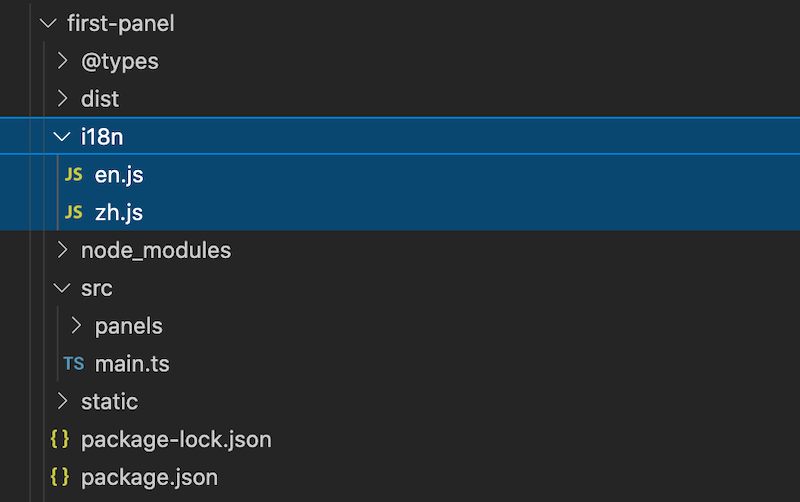Multilingual System (i18n)
What is i18n
i18n (derived from the first and last characters i and n of the English word internationalization, with 18 being the number of characters in between) is short for "internationalization".
In the field of information, i18n refers to the ability to adapt products (publications, software, hardware, etc.) to the needs of different languages and regions without much change.
In the field of application development, i18n refers to the ability to display localized content for different languages and regions without modifying the internal code.
The built-in i18n in the Cocos Creator extension system allows extensions to configure key-value mapping for multiple languages and use strings from different languages in the extension according to the editor's current language settings.
i18n Folder
To enable the i18n, you need to create a new folder named i18n in the extension directory and add a corresponding JavaScript file for each language as key-value mapping data.
The data file name should be consistent with the language code, e.g. en.js corresponds to English mapping data, zh.js corresponds to Chinese mapping data. As shown in the following figure.

The mapping takes the key of the JavaScript object as the key value and is exported with the module information as follows:
en.jsjavascript"use strict"; module.exports = { open_panel:"Default Panel", send_to_panel:"Send message to Default Panel", description:"Extension with a panel" };zh.jsjavascriptmodule.exports = { open_panel:"默认面板", send_to_panel:"发送消息给面板", description:"含有一个面板的扩展" };
Take open_panel as an example, suppose the registered extension name is first-panel, then the corresponding text translation key is first-panel.open_panel.
Using in Scripts
In TypeScript or JavaScript scripts, the translated text for the current language can be obtained through the ``Editor.I18n.t`'' interface.
let str = Editor.I18n.t('first-panel.open_panel');Use in HTML Templates
You can use the ui-label element for translation in HTML templates if you need to translate.
<ui-label value="i18n:first-panel.open_panel"></ui-label>Note:
ui-labelis a normal in-line element, similar to span.
Use in json Files
For example, when registering a menu path in the package.json of an extension package, the path can be translated into multiple languages using the form i18n:${key}, as long as the field supports i18n formatted paths.
Example 1: Extension description
// "package_version": 2,
// "version": "1.0.0",
// "name": "first-panel",
"description": "i18n:first-panel.description",
// "main": "./dist/main.js",Example 2: Panel Title
"panels": {
"default": {
"title": "first-panel Default Panel",
// "type": "dockable",
// "main": "dist/panels/default",
// "size": {...}
}
},Example 3: Menu path and display content
"menu":[
{
"path": "i18n:menu.panel/first-panel",
"label": "i18n:first-panel.open_panel",
"message": "open-panel"
},
{
"path": "i18n:menu.develop/first-panel",
"label": "i18n:first-panel.send_to_panel",
"message": "send-to-panel"
}
]